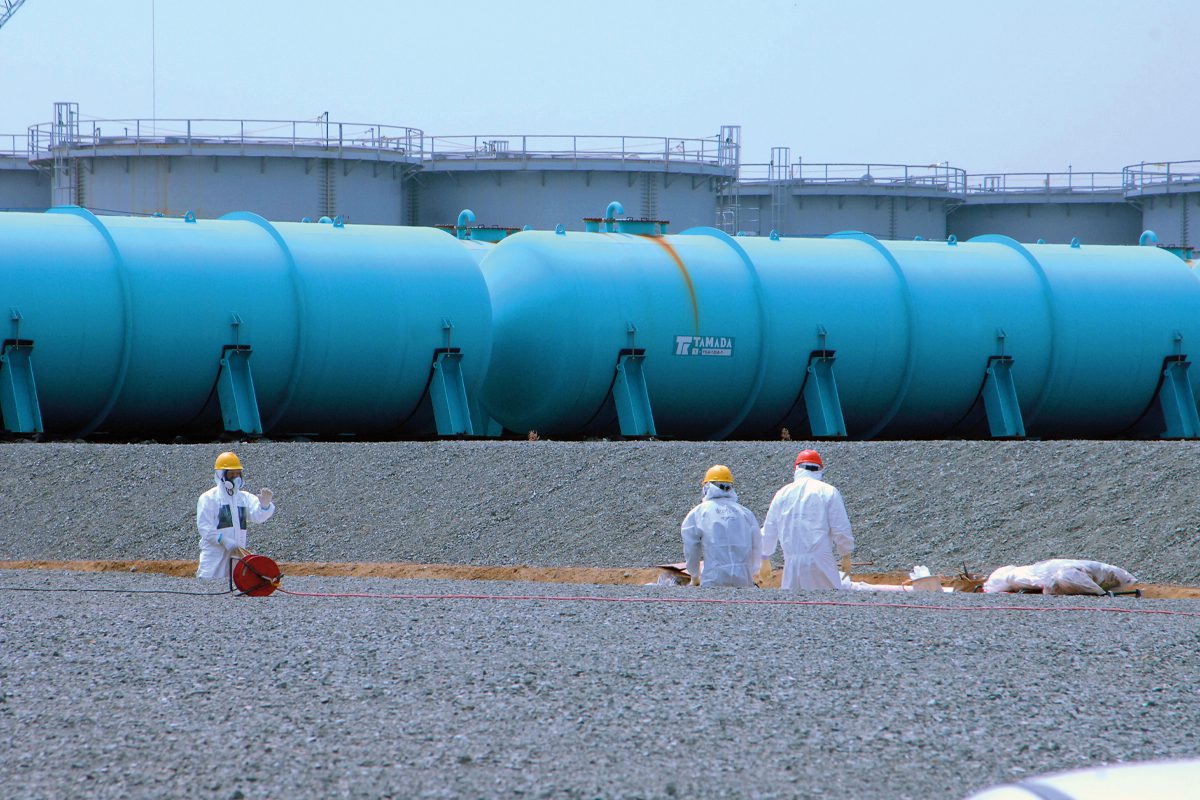In late October pressure appeared to be mounting on the Japanese government to decide on a method of disposal for 1.2 million tonnes of radioactive wastewater from the former nuclear plant at Fukushima Daiichi

As rain and groundwater continue to pour into the site – at a rate of 180m3 per day in 2019 – the volume of contaminated water is expected to reach 1.37 million tonnes by the end of 2020. The water is being stored in around 1000 tanks on the site, with existing capacity likely to be surpassed by mid-2022, according to the International Atomic Energy Agency (IAEA).
In late October, the Japanese government were preparing to approve a plan to begin discharging the contaminated water into the sea, starting in 2022 and continuing for decades. Opposition has come from fishing and farming groups in the area, neighbouring countries, and environmental groups.
A purification system is treating the water, known as the Advanced Liquid Processing System (ALPS), and the filtering process therein is said to remove around 62 radioactive contaminants, according to an October report in NewScientist.
A report released by Greenpeace in October – Stemming the Tide 2020: The reality of the Fukushima radioactive water crisis – argues that the ALPS is flawed, and many of the dangers presented by this wastewater are being ignored. The firms operating the ALPS, Toshiba and Hitachi General Nuclear Electric (HGNE) came to the project with “practically no experience in water processing” said the report, and the ALPS’ poor performance is also likely related to a decision to exclude an alternative technology, an ion exchange system proposed by US firm Purolite, which in 2011 was seemingly shown capable of reducing concentrations of radionuclides to “non-detectable levels.”
As it stands, says the report, it looks like 72% of the water currently in storage tanks will have to be processed again – and questions remain as to how effective this will be.
The Japanese Government and Tokyo Electric Power Company (TEPCO), which runs the site, have said the main radionuclide remaining in the wastewater is tritium, an isotope of hydrogen. Filtering will remove some but not all of this, although scientists appeared to consider its risk to marine life and the environment as relatively minor, in comments made to NewScientist. However, Greenpeace said TEPCO “continues to misrepresent and selectively ignore basic science facts on radioactive tritium.”
Key among the objections made by Greenpeace to the Government’s plan is that the ALPS was not designed to remove carbon-14, a hazardous radionuclide whose presence in the wastewater was only acknowledged by TEPCO in late August. With its long half life of 5,730 years, its presence is a far greater concern. As the report says, “once introduced into the environment carbon-14 will be delivered to local, regional and global populations for many generations.”
Ongoing storage carries the risk of tank leakage, especially in an area where earthquake risk is high.
Discharge to the sea is a routine method of disposal used by nuclear facilities worldwide, according to the IAEA. But if this approach is rejected, alternative disposal plans comprise evaporating the wastewater into the air, or expanding the existing storage capacity and continuing to store the water either on land or underground.
The latter option carries the risk of tank leakage, especially in an area where earthquake risk is high. But Greenpeace said “storage is a viable option”, citing a report from a government sub-committee that appeared to understand that additional storage beyond 2022 was feasible, but had seemingly decided against it as it would take “a substantial amount of coordination and time”. In any case, delaying the beginning of any program to discharge the water into the sea until around 2035 would only delay completion of the project by around three years, until 2055, while allowing much of the tritium’s radioactivity to diminish naturally.
Greepeace’s report said the subcommittee’s preference for discharge to sea “was clearly not based on science and engineering, but on the political interest of the Japanese government and the future viability of TEPCO.”







